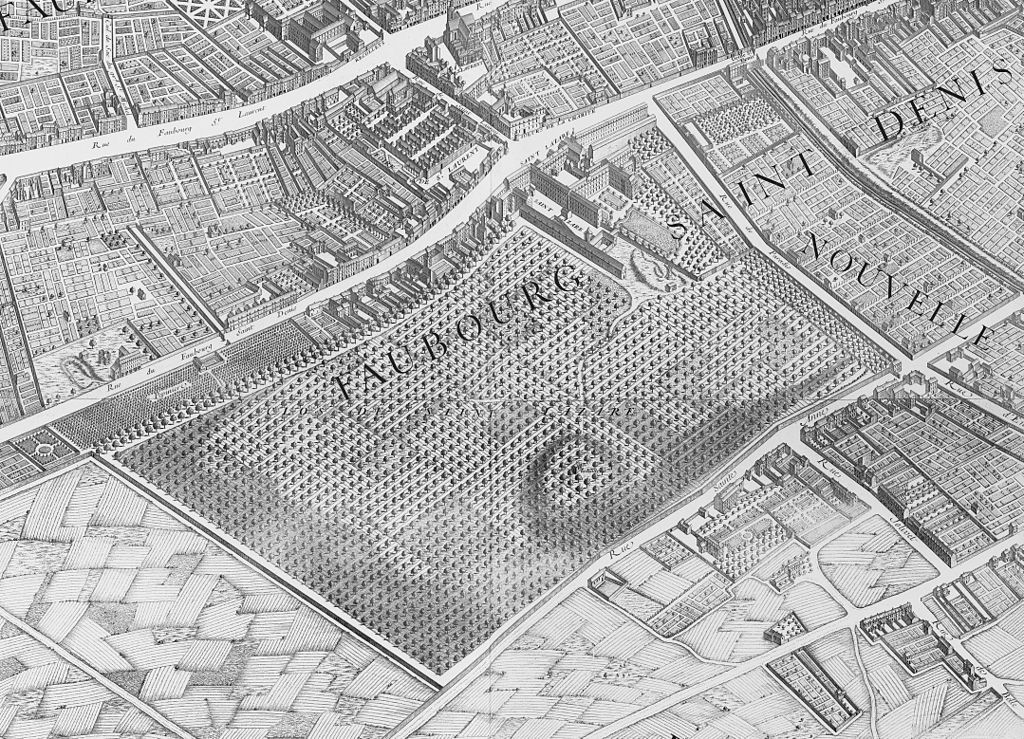
Saint-Lazare Prison was a prison in the 10th arrondissement of Paris, France.
History
Originally a leprosarium was founded on the road from Paris to Saint-Denis at the boundary of the marshy area of the former River Seine bank in the 12th century. It was ceded on 7 January 1632 to St. Vincent de Paul and the Congregation of the Mission he had founded. At this stage, it became a place of detention for people who had become an embarrassment to their families: an enclosure for “black sheep” who had brought disgrace to their relatives.[citation needed]
The prison was situated in the enclos Saint-Lazare, the largest enclosure in Paris until the end of the 18th century, between the Rue de Paradis to its south, the Rue du Faubourg-Saint-Denis to its east, the Boulevard de la Chapelle to its north and the Rue Sainte-Anne to its west (today the Rue du Faubourg Poissonnière). Its site is now marked by the Church of Saint-Vincent-de-Paul.[citation needed]
The building was converted to prison at the time of the Reign of Terror in 1793, then a women’s prison in the early 19th century, its land having been seized and re-allotted little by little since the Revolution. It was largely demolished in 1935, with the Assistance publique – Hôpitaux de Paris installing itself in the remaining buildings, where they remained until recently. Only the prison infirmary and chapel (built by Louis-Pierre Baltard in 1834) remain of the prison, with the latter to be seen in the square Alban-Satragne (107, rue du Faubourg-Saint-Denis) in the 10th arrondissement. The surviving remains of the Saint-Lazare prison were inscribed on the supplementary inventory of historic monuments in November 2005.
- ARRETE N° 2005 – 2347 portant inscription au titre des monuments historiques de l’ensemble des bâtiments dus à l’architecte Louis-Pierre Baltard: les façades et toitures de l’ancienne infirmerie, le sol de la cour et la totalité de la chapelle de l’ancienne prison, devenue Hôpital Saint-Lazare, sis 1 à 5 square Alban-Satragne et 107 rue du Faubourg-Saint-Denis à PARIS (l0ème); situés sur la parcelle n° 48 d’une contenance de 1 ha 03 a 12 ca, figurant au cadastre section AP et appartenant à la Ville de Paris.
- CONSIDERANT que les bâtiments subsistants de l’ancienne prison Saint-Lazare constituent l’un des rares exemples parisiens d’architecture néo-classique construits par Louis-Pierre Baltard et qu’à ce titre ils présentent un intérêt d’art et d’histoire suffisant pour en rendre désirable la préservation et les classer au titre de monuments historique
The Musée de la Révolution française conserves a portrait of Joseph Cange, a prison officer at the Saint-Lazare prison during the reign of Terror, who gave financial help to the family of a prisoner at the risk of his life and that was honoured nationally after the fall of Robespierre.
A song by Aristide Bruant entitled “À Saint-Lazare” is named after the prison.
Famous prisoners
Pre-Revolution
- Henri de Saint-Simon, French social theorist and one of the chief founders of Christian socialism
- Durkheim, E. (1959) [1928] Socialism, London: Routledge and Kegan Paul Ltd.
- Encyclopædia Britannica (2014) Henri de Saint-Simon, available online at http://www.britannica.com/EBchecked/topic/518228/Henri-de-Saint-Simon (accessed 17/01/2014)
- Pierre de Beaumarchais, playwright
During the Revolution
- François-Joseph Bélanger, architect
- Adèle de Bellegarde, salonnière and model for Jacques-Louis David
- André Chénier, poet
- Aimée de Coigny (1769–1820), known as la Jeune Captive from her elegy by André Chénier
- Hubert Robert, painter
- Marquis de Sade, writer and libertine
- Joseph-Benoît Suvée, painter
- Charles-Louis Trudaine, conseiller au Parlement
- Jean-Antoine Roucher, receveur des gabelles, poet, portrayed several times by Hubert Robert
- Thomas de Treil de Pardailhan, former baron and député for Paris in the Legislative Assembly
Post-Revolution
- Louise Michel, communard
- Mata Hari, spy
- Léonie Biard, Victor Hugo’s mistress
Sources
- Jacques Hillairet, Gibets, Piloris et Cachots du vieux Paris, éditions de Minuit, Paris, 1956 (ISBN 2707312754).
- (in French) Appel des dernières victimes de la terreur à la prison Saint-Lazare à Paris les 7-9 Thermidor an II by Charles-Louis Muller (1815–1892), painting held at the Musée national du château de Versailles.
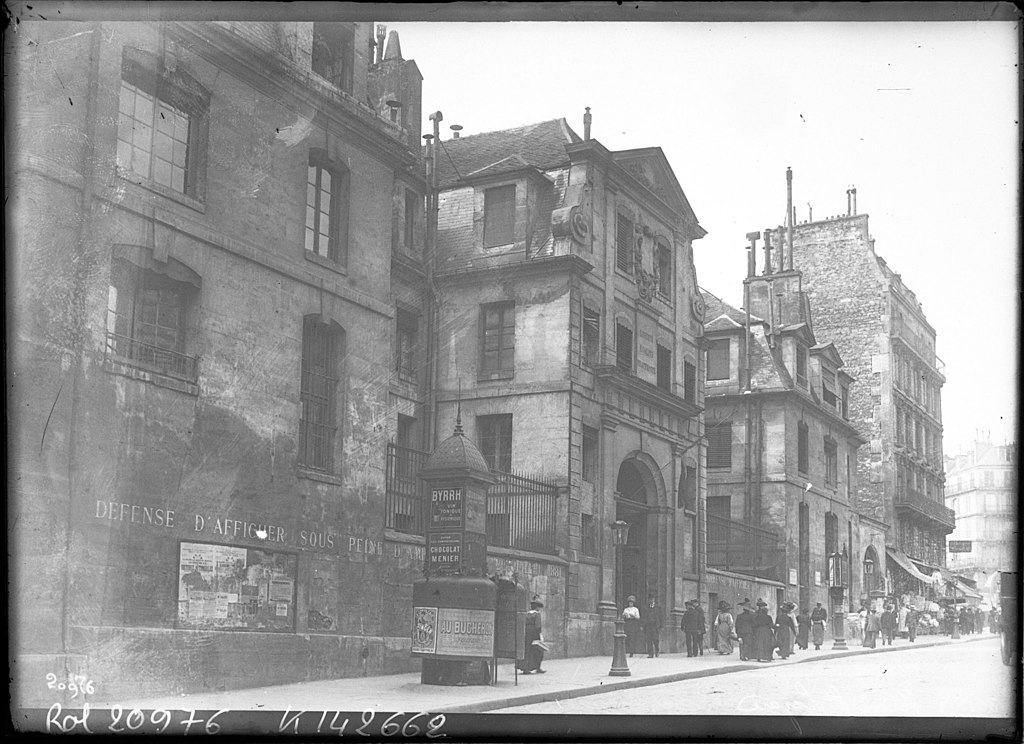
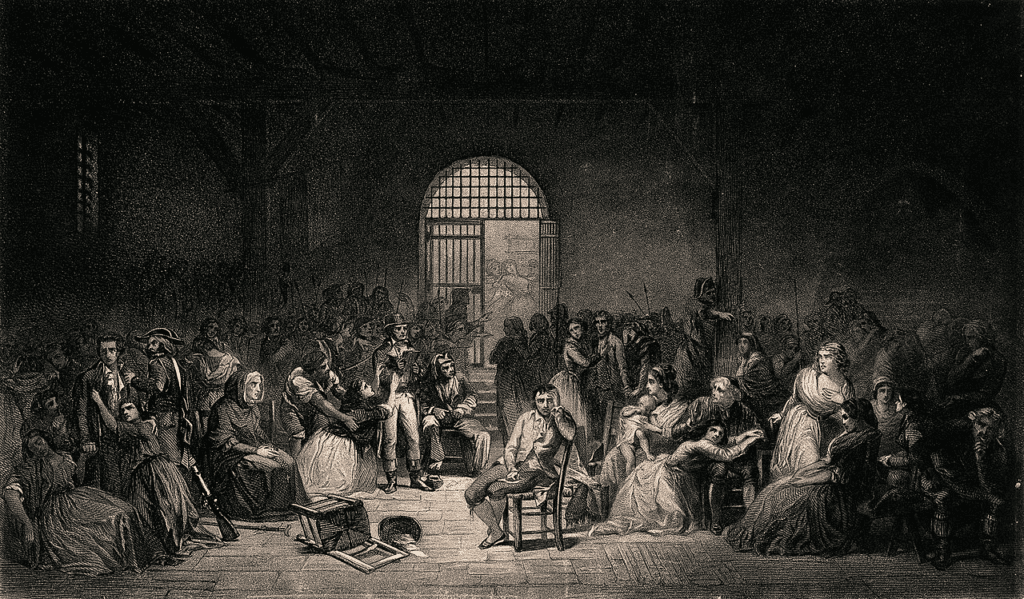
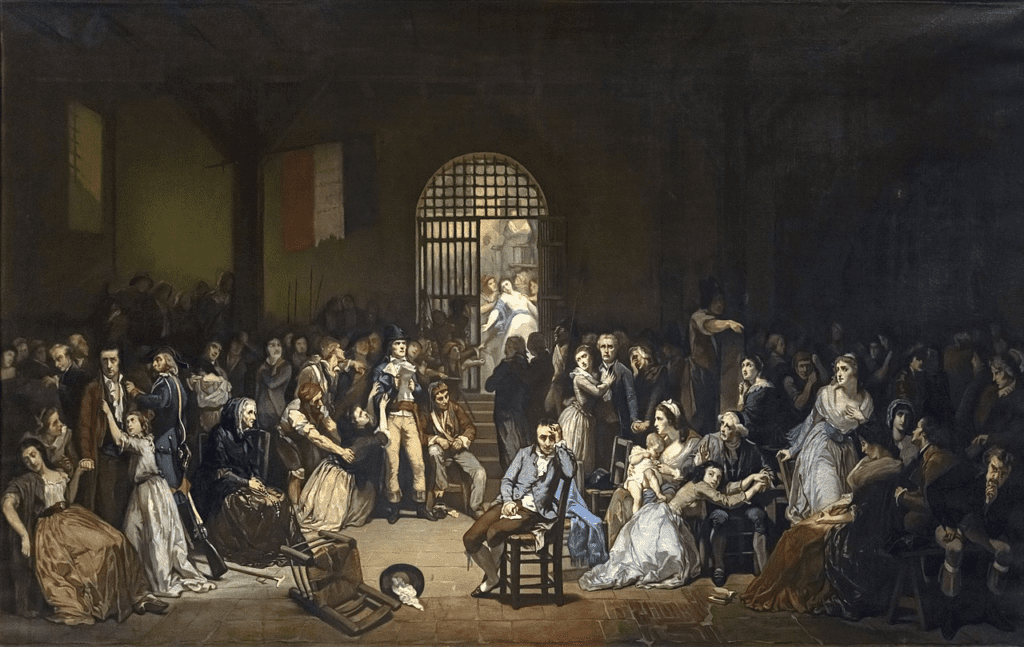
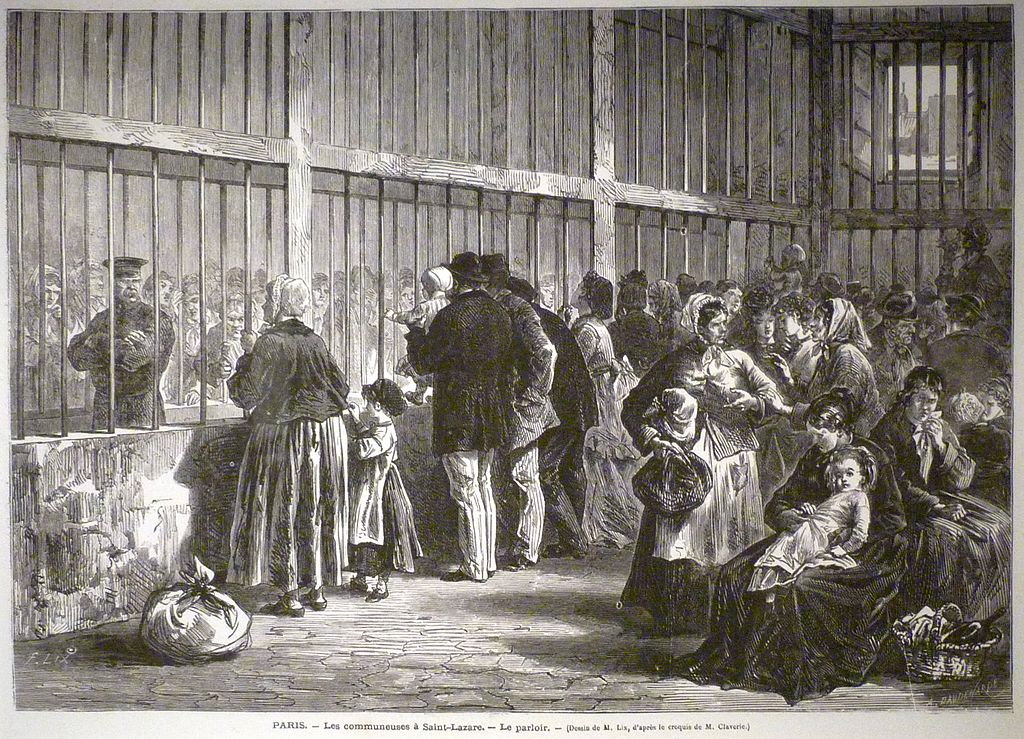


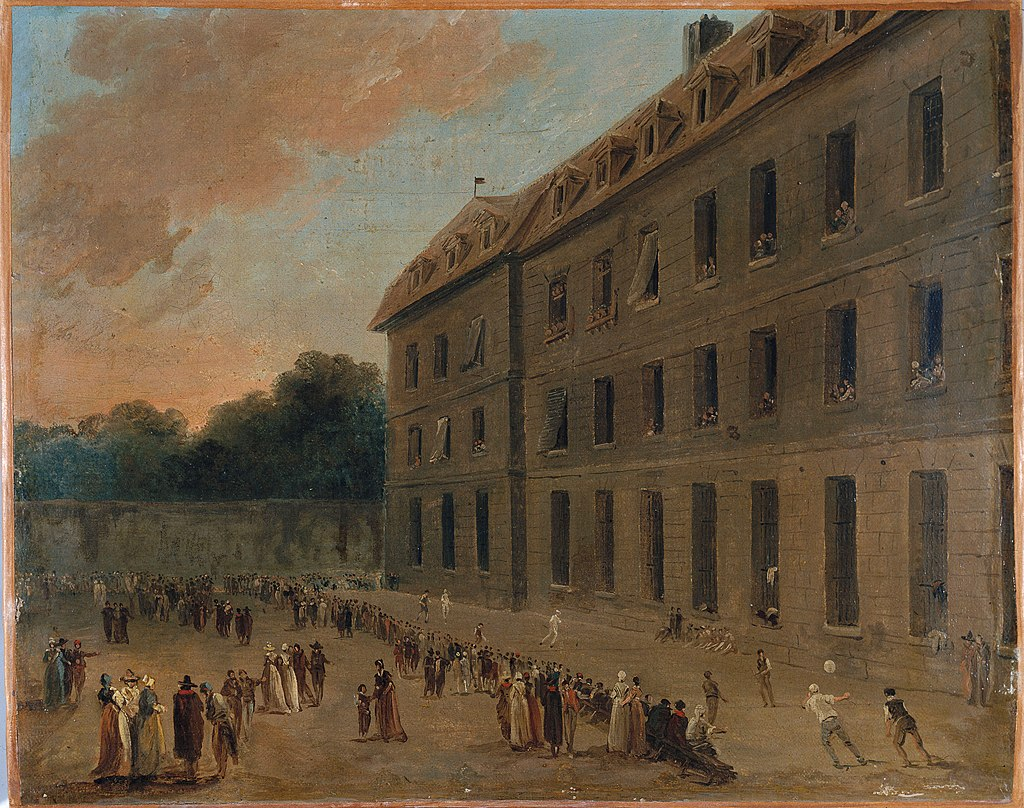


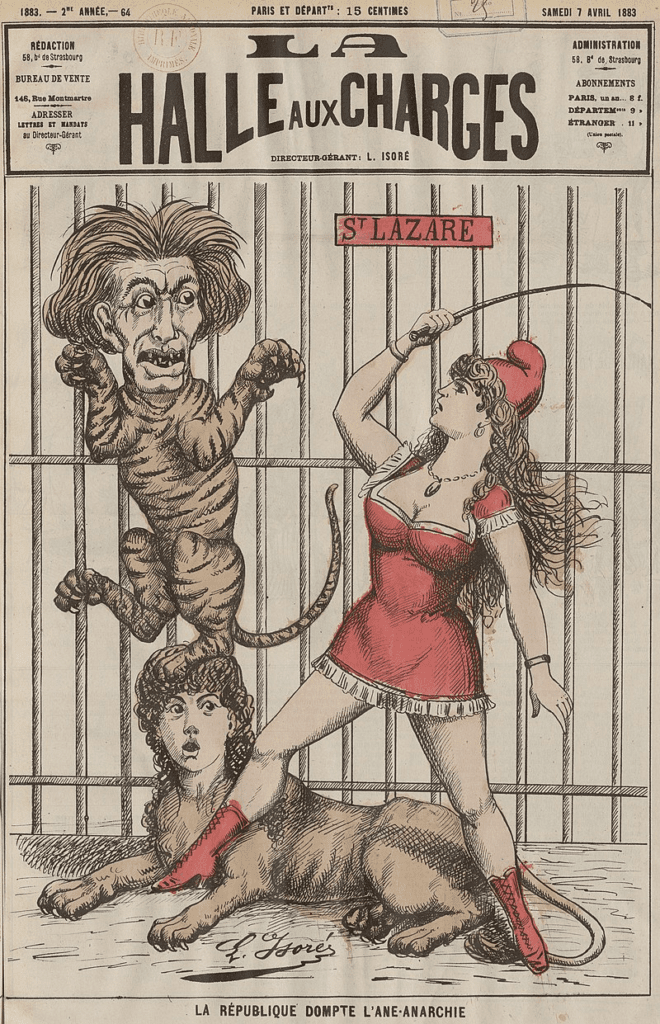
Notes
- ARRETE N° 2005 – 2347 portant inscription au titre des monuments historiques de l’ensemble des bâtiments dus à l’architecte Louis-Pierre Baltard: les façades et toitures de l’ancienne infirmerie, le sol de la cour et la totalité de la chapelle de l’ancienne prison, devenue Hôpital Saint-Lazare, sis 1 à 5 square Alban-Satragne et 107 rue du Faubourg-Saint-Denis à PARIS (l0ème); situés sur la parcelle n° 48 d’une contenance de 1 ha 03 a 12 ca, figurant au cadastre section AP et appartenant à la Ville de Paris.
CONSIDERANT que les bâtiments subsistants de l’ancienne prison Saint-Lazare constituent l’un des rares exemples parisiens d’architecture néo-classique construits par Louis-Pierre Baltard et qu’à ce titre ils présentent un intérêt d’art et d’histoire suffisant pour en rendre désirable la préservation et les classer au titre de monuments historiques. - Benjamin Delessert, Les Bons exemples, p.147
- Durkheim, E. (1959) [1928] Socialism, London: Routledge and Kegan Paul Ltd.
- Encyclopædia Britannica (2014) Henri de Saint-Simon, available online at http://www.britannica.com/EBchecked/topic/518228/Henri-de-Saint-Simon (accessed 17/01/2014)
External links
- Media related to Prison Saint-Lazare at Wikimedia Commons
Leave a Reply